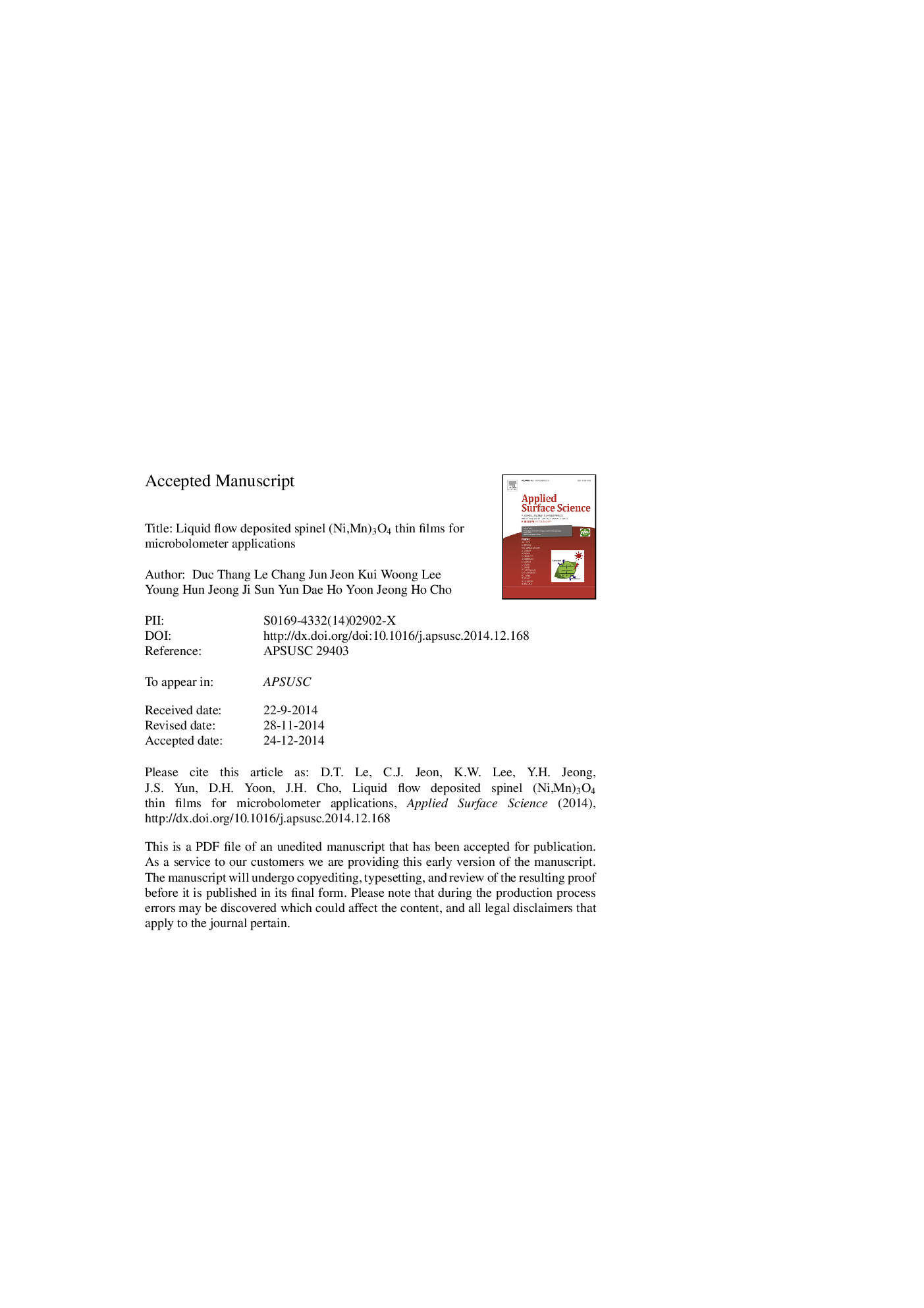| Article ID | Journal | Published Year | Pages | File Type |
|---|---|---|---|---|
| 5348721 | Applied Surface Science | 2015 | 31 Pages |
Abstract
A liquid flow deposition (LFD) technique was initially used for the fabrication of single-component Mn3O4 thin films onto Si wafer substrates at a range of substrate temperatures of 30-80 °C, with the introduction of an oxidizing reagent (H2O2). As a result, solid thin films were well formed from an aqueous solution. An X-ray diffraction (XRD) analysis showed typical characteristics of hausmannite Mn3O4 with a spinel tetragonal phase. Field-emission scanning electron microscopy (FE-SEM) observations revealed nano-sized grains arranged uniformly on a dense and smooth surface for all of the as-deposited films. On the other hand, the LFD method was then extended to prepare two-component nickel-manganite films according to the binary chemical composition of NixMn3âxO4 with x = 0.02-0.2. The as-grown nickel-manganite films showed a surface with a good quality with a spherical bead-like architecture when x â¤Â 0.10, while a conversion from spherical grains into highly porous nanowalls in the microstructure was noted in films when x â¥Â 0.12. These results signify that it is possible to fabricate various multi-component manganite-oxide thin films at a low temperature. In addition, the dependences of the room-temperature electrical resistivity (Ï) and the temperature coefficient of resistance (TCR) on the Ni substitution level (x) were investigated on films annealed at 400 °C.
Related Topics
Physical Sciences and Engineering
Chemistry
Physical and Theoretical Chemistry
Authors
Duc Thang Le, Chang Jun Jeon, Kui Woong Lee, Young Hun Jeong, Ji Sun Yun, Dae Ho Yoon, Jeong Ho Cho,
